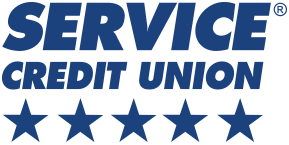The Basics of Student Loans

The college application process is daunting.
For many people, like myself, attending higher education was made possible by financial support. It was not too long ago that I was in your shoes. I remember thinking, “where the heck do I start?”
Here’s the skinny from a former student to anyone about to start their college career and their friends and family, who may be assisting them along the way.
Start With the FAFSA
The acronym FAFSA stands for “Free Application for Federal Student Aid.” This is a great place to start when seeking assistance to finance your education. This type of assistance comes from the federal government and is available to all students applying to college or already attending college. The FAFSA form is a universal document that helps college admissions staff determine how much financial aid you are eligible for based on your circumstances. Each fall, you fill out the form providing information about you and your family’s financial situation in order for the college to calculate what amount of aid you should receive for the coming year of school. The aid can come in different forms, such as grants, subsidized or unsubsidized loans.
Unsubsidized vs Subsidized Loans
The difference between subsidized and unsubsidized loans is major, so it is important to choose which option is right for you. Speaking as a former student, direct subsidized loans have better terms. This type of loan is only offered to undergraduate students that can prove they are in need of financial assistance. In other words, the school determines how big of a loan you can get based on the cost to attend the institution. You cannot take any more than that. The big selling point on this type of loan for a student is that you do not need to begin paying interest on the loan until the first six months after you graduate, allowing you a grace period to get a job and begin saving.
A direct unsubsidized loan functions differently than an unsubsidized loan. There is no requirement to demonstrate financial need and it is available to both graduate and undergraduate students. Similar to a subsidized loan, the school determines how much of a loan you will receive, but this determination is based on what other financial aid you have attained, not how much you need. The catch with unsubsidized loans is that you are responsible for paying the interest on the loan throughout all periods during school.
Private Loans
If you do not wish to take a loan out through the federal government, private loans may be the best option for you. Many different financial institutions offer private student loans. Getting this type of financial support requires a direct application to a credit union, bank, or another lender. There are few important notes to consider before heading down this path. A private student loan may require a credit record. Additionally, repayment options may vary and you may need someone to cosign the loan.
Paying Your Loans
Then, of course, there is repaying your loans. Unfortunately, your loan is not a gift, and you do need to pay it back. Payment of student loans, either during or after graduating college, looks different for everyone. You will want to make sure you speak with your loan servicer to create a realistic payment plan.
I know, the process of attaining a student loan can seem arduous, but there are options available everywhere. To explore those options, or to further educate yourself, check out Service Credit Union’s student loan resources now.




